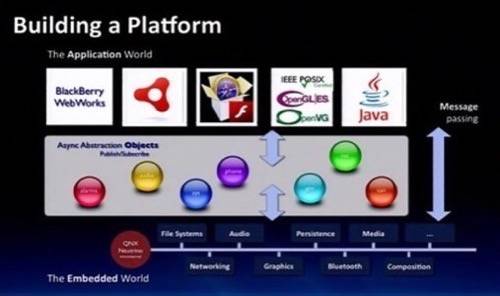At the BlackBerry Developers Conference today, RIM announced its first tablet, called the BlackBerry PlayBook, as well as new initiatives designed to make BlackBerry development easier and more profitable. As previously reported elsewhere, the tablet will run on QNX, a UNIX-like operating system RIM acquired earlier this year. Notably, RIM will support the “full web” – including Flash – on the tablet as well Adobe‘s AIR platform for cross-platform applications. Enterprises seeking to avoid the consumerization of IT and those interested in developing across platforms will both welcome these announcements.

RIM bills the PlayBook as “The first multiprocessing, multitasking, uncompromised browsing, enterprise ready professional-grade tablet.” However, HP is planning a Windows 7 based enterprise tablet for this fall, and Cisco is planning an Android based enterprise tablet for Q1 2011 as well. Also, the iPad has already caught on well in the enterprise, and Forrester has suggested it can be secure enough for most enterprises. And with multi-platform device management software from companies like Good and Mobile Iron, forthcoming Android tablets from ASUS and Samsung are contenders for the enterprise as well.
Forrester analyst Tim Sheedy is concerned with RIM’s strategy of tying the PlayBook closely to BlackBerry handsets. “It is as if they are doing it to make the BlackBerry phone a more attractive device (i.e. it is more about selling phones than PlayBooks),” says Sheedy. “I would have liked them to take a more offensive position with the device – using it as a way to grow the number of BlackBerry/RIM device users in firms – not just try to protect the existing base.”
All that said, both the PlayBook and RIM’s development announcements are still impressive. RIM isn’t breaking any new ground with the tablet, but it certainly isn’t falling behind. “Moving to the 1 GHZ dual-core CPU and 1BG RAM for reader improves from the Torch’s latent users experience to a more natural fluid user experience,” Alimeter co-founder and enterprise analyst R “Ray” Wang says. “This now allows business users another paradigm to enable mobile scenarios in field service (repairs) and sales professionals and executives to drive consumer advances into the safe, scalable, and secure enterprise class RIM environment.”
An addition to easing app development, RIM is more deeply integrating with other enterprise platforms, as I suggested it do earlier this year. Today’s announcements go a long way towards keeping RIM in the game and point towards a few key trends in enterprise mobility.
Video Conferencing Goes Mobile

One notable feature is the dual facing cameras for video conferencing. Our Chris Cameron already noted the augmented reality possibilities of such a system, but the short term business use will likely be in video conferencing. This may seem like a consumer focused feature, but don’t forget that Cisco is positioning its tablet primarily as a mobile video conferencing device for the enterprise (though Cisco is expected to bring its TelePresence technology to consumers soon). The iPad doesn’t yet have a camera to support Apple‘s new Face Time standard, but don’t be surprised to see that in future iterations.
The Cross Platform Future

WebWorks, the center of RIM’s new development initiatives, will enable developers to build native BlackBerry apps in HTML5. “Webworks is key to RIM’s future as it’s based on HTML 5 and the new Web API’s,” Wang says “The move to open source will help improve the apps offerings for RIM, an area they have been failing in over the past 2 years.”
Other platforms already exist for creating BlackBerry apps with HTML5, such as RhoMobile‘s Rhodes, PhoneGap, Titanium and the just launched DragonRAD.
RhoMobile CEO Adam Blum is hopeful that WebWorks’ “use your web skills to write native smartphone apps” approach will provide a stepping stone to Rhodes. Both DragonRAD and Rhodes are focused on easing the development of mobile applications requiring interfacing with the backends of enterprise applications.
Julian White the CEO of DragonRAD parent company Seregon emphasized that DragonRAD will support the new QNX based BlackBerry Tablet OS.
However, the PlayBook’s support for Adobe‘s Flash and AIR are some of the more intriguing aspects of the announcement. Flash and AIR haven’t proved to be popular enterprise development platforms as of yet, but the support does demonstrate RIM’s willingness (or perhaps desperation) to support cross-platform apps. Adobe has been amping up its enterprise holdings lately. In July it acquired ECM vendor Day Software, a company that just happens to be one of the largest contributors to the popular open-source web server Apache. How much will Adobe’s increased interest in the enterprise intersect with RIM in the future?
Aggressively Courting Developers
In addition to making it easier for developers to create apps with WebWorks, RIM announced an advertising platform and an in-app payments program to court more developers. Android and iOS have leapfrogged BlackBerry in the number of apps available, so RIM needs to do everything it can to bring developers to its platform. More monetization options is a great start. RIM will also partner with WebTrends to offer app analytics.










